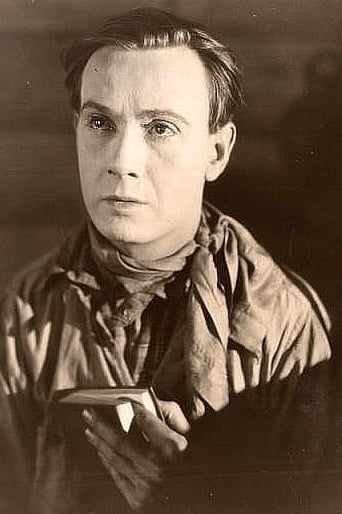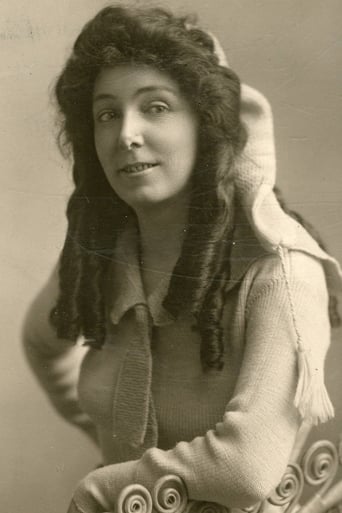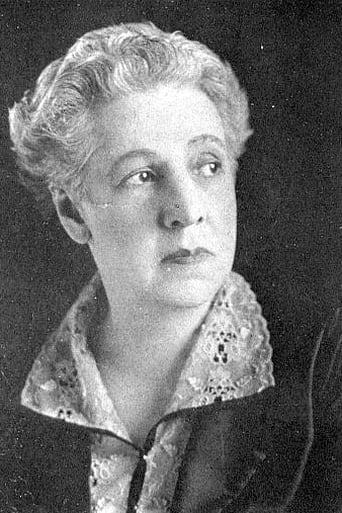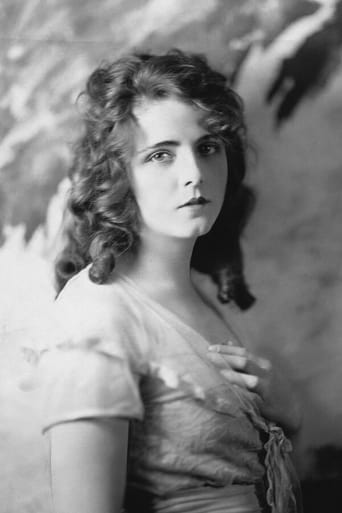Nonureva
Really Surprised!
RipDelight
This is a tender, generous movie that likes its characters and presents them as real people, full of flaws and strengths.
Allison Davies
The film never slows down or bores, plunging from one harrowing sequence to the next.
GusF
Only the second adaptation of the classic 1876 novel "The Adventures of Tom Sawyer" by Mark Twain, this is a hugely enjoyable silent comedy adventure film. The first adaptation was released in 1907 and is now lost but it is notable as being the only film version of any of Twain's works made during his lifetime. This film has an excellent script or, use the vernacular of the time, photoplay by Julia Crawford Ivers which sticks closely to the source material. That said, only the first half of the novel was adapted for the screen on this occasion as it ends with the "funeral" scene. The remainder and parts of its sequel "Adventures of Huckleberry Finn" formed the basis of the film's 1918 sequel "Huck and Tom", which is likewise lost. The film is very well directed by William Desmond Taylor. Between them, he and Crawford Ivers were able to create a charming slice of Americana which is suitably evocative of the novel. Rather appropriately, the film was shot in Twain's home town of Hannibal, Missouri. Taylor may be best known as the victim of one of the most (in)famous murders in Hollywood history in 1922, which was never solved. At only 58 minutes, the film is very short by today's standards but I think that it was about average for the time. While I have seen a few older Chaplin Chaplin shorts, this is the oldest feature film that I have ever seen but it probably won't stay that way for too long.The film stars Jack Pickford in a first rate performance as the rambunctious title character. The lesser known younger brother of the Queen of Hollywood and brother-in-law of its King Douglas Fairbanks, the great success enjoyed by his relatives eluded him but he nevertheless had a pretty decent career. As was the case with many actors of later generations, it was curtailed by his drug and alcohol abuse and he died of multiple neuritis in 1933 at the age of only 37. The people who worked on this film were clearly not the luckiest bunch. At 21, Pickford is perhaps the oldest actor to ever play Tom Sawyer on screen but I understand that it was a fairly common practice in the silent era for adults to play children. A particularly egregious example occurred when his elder sister, then 27, played the 12-year- old title character in "Pollyanna" (1920). In any event, Pickford is very effective in communicating the young scamp's mischievousness, which is nicely contrasted with his basic goodness and innocence, through his facial expressions. His devilish grin when it occurs to him that he can fool others into whitewashing Aunt Polly's fence is a joy to behold. After a few minutes, I was able to accept him as being a young boy due to the body language that he adopts and the way in which he treats every minor task that Aunt Polly and other adults expect him to perform as a major affront to his pursuit of happiness. The Canadian Pickford was very well cast as the iconic all-American boy.Two of my favourite scenes in the film involve Becky Thatcher. When Tom meets her for the first time outside her house, it is clear - again from Pickford's expressions - that he is smitten with her but that he has to work up the courage to have a proper conversation with her. It is a lovely little moment. When he sits beside her in school the following Monday and he tells her that he loves her, there is a real sense of the awkwardness and shyness that typically accompanies such early adolescent encounters. Thankfully, Clara Horton is just as capable as Pickford in portraying this or the scene would not have been nearly as sweet as it was. Robert Gordon does not have much screen time as the "juvenile pariah" Huckleberry Finn with whom Tom is "under strict orders not to play" but he is very funny in the role. It certainly comes across that Huck is even more of a troublemaker than Tom but just as well-meaning in his own way. Edythe Chapman is pretty over the top as Aunt Polly but it mostly works to the film's benefit and Antrim Short offers good support as Joe Harper. It's a terrible shame that "Huck and Tom" is lost as I'd have liked to have seen more of Pickford and Gordon as the two boys. Almost the entire cast from this film returned for the sequel, as did Taylor and Crawford Ivers.Overall, this is a great adaptation of one of the great American novels.
JohnHowardReid
A remarkably sophisticated offering for 1917, although I have the feeling that the surviving 60-minutes version is actually the Kodascope cutdown and not the original length at all. Some scenes seem truncated and it's hard to believe that a director as sophisticated and acute as William Desmond Taylor would go out of his way to cut scenes off in mid-stride as it were, even though all the pertinent points had been made. This makes the flow of the film somewhat jerky. It would be nice to get hold of the original orchestral music score and find out how long it played. Anyway, for once, Alpha has provided a really good score for the DVD version. So many of Taylor's films have disappeared, it's good to have this one, especially as Jack Pickford so brilliantly overcomes the fact that he's actually too old for the title role. I'd put this down as Jack's best surviving performance.
wes-connors
Jack Pickford (as Tom Sawyer) is not the model boy of his village; in fact, he beats up the model boy (Carl Goetz). Mr. Pickford is impressed with the "juvenile pariah" of the village, Robert Gordon (as Huckleberry Finn) - although Pickford is "under strict orders not to play" with Mr. Gordon, the boys are attracted to each other; and, Gordon brings Pickford a large watermelon to eat. Sore from tussling with the model boy, and sporting a "sore toe", Pickford is, nevertheless, ordered to whitewash the Sawyer fence. Along comes Antrim Short (as Joe Harper), eating an apple, and pretending to be a Mississippi river steamboat; Pickford tricks Short into giving up his apple, and whitewashing the fence. Pickford is munching on a different apple when he notices "new girl in town" Clara Horton (as Becky Thatcher)… Director William Desmond Taylor and writer Julia Crawford Ivers' adaptation is first rate; the production team would finish the lads' adventures with "Huck and Tom" (1918) and "Huckleberry Finn" (1920). This beginning is a surprisingly good, and relatively faithful, version of the Mark Twain classic. The focus is on Pickford's "Tom", and his friendships with Gordon's "Huck" and Short's "Joe". The three boys take off together, going down the Mississippi river; while, back home, the villagers think they are dead. Jack Pickford proves himself to be as good a performer as his more famous sister (Mary Pickford); he is more than capable in the "Tom Sawyer" role - skipping, pouting, flirting, jumping fences, and getting sick on fresh catfish; he brings the character to life. He and the other "children" appear too old for their roles in many instances; so, for example, Pickford stealing a kiss from Horton loses its innocence, and looks more like an attack. Yet, most of the time, the performers make themselves believable. Though most faithful, this is definitely an interpretation of Twain's characters. There is some symbolism in this film that I don't recall from the novel (which I will have to re-read); director Taylor uses food (like the Apple) from the novel; but, possibly, in a different way. Pickford and Gordon create a particularly interesting dynamic: drawing lines with their feet, rubbing shoulders, and drawing in their knees. I found the recurring "sore toe" of Tom's fascinating; and, note that when the boys "escape", he is relieved from this malady. This is another nuance to track in a re-reading of "Tom Sawyer". ******** Tom Sawyer (12/2/17) William Desmond Taylor ~ Jack Pickford, Robert Gordon, Antrim Short
Into_The_West
The literary critic Leslie Fiedler made a name for himself writing the essay, "Come Back to the Raft Ag'in, Huck Honey," in which he asserted Jim and Huck were in some way sexually or romantically attached in the book, "Huckleberry Finn." While the methodology by which he arrived at this conclusion was questionable, his inspiration, likely unconscious, was the interpretations some film directors have given to Twain's work, such as William Desmond Taylor's in this film.It's not been uncommon to cast actors a lot older than Tom and Huck to play these characters. Finding actors between the ages of 12 and 14 to play these parts competently, at least in the past, wasn't easy. Romeo and Juliet have rarely been played in film by teenagers for this reason.So we have Jack Pickford at the age of 21 playing Tom, and Robert Gordon at 22 playing Huck! Both are too tall, physically mature and attractive to be viewed as early adolescent boys. Gordon, dressed in a ragged shirt missing one sleeve, displays a muscular arm no 14 year old boy could have.So the film becomes one about boys in their late teens, making scenes that are supposed to be evocations of innocence into something quite different. The scene where Pickford, Gordon, and 17 year-old Antrim Short as Joe Harper run naked (they're actually wearing undershorts, but the duration of the shots are so brief the impression is of nudity) through a glen, dive into the Mississippi, then wrestle each other in the water is a prime example. Indeed, when this film was shown on Turner Classic Movies, it was given a "TV PG" rating, undoubtedly for this scene.It isn't, however, just about the actors being "too old" to play the characters. A scene early on in the film has Pickford come over to Gordon who is sitting by a water pump. Gordon then scratches the ground with his big toe in a way that seems to mirror Pickford's awkward exchanges with Clara Horton as Becky Thatcher later in the film. Gordon then points out he has brought a watermelon for he and Pickford to share. Pickford is elated, Gordon tears apart the watermelon, and they both eat from it, exchanging beaming glances at each other as they do. Whereas people might argue as to whether Huck is flirting with Tom or not, one has to acknowledge Gordon's Huck does not fit the film stereotype of the Huck we've come to expect--he is not a cute, clean and orderly, freckled, red-haired kid. This Huck is a raggedy, dirty, "helter-skelter" (to quote a 1917 film review) "juvenile pariah" (to quote the subtitle introducing him in the film). Indeed, it doesn't seem far off to say this Huck seems like a very young, attractive, good-hearted, nice-natured version of the backwoodsmen in "Deliverance," a product of an isolated, impoverished, neglected and highly abusive childhood (which in this case is very much from Twain). This particular Huck _could_ flirt with Tom, and it seems more acceptable because both boys seem more like adults.Undoubtedly, these things have to have had an impact on people like Leslie Fiedler indirectly through their influence on subsequent Twain films.This is not to say these things in any way distract from the story. Taylor prevents this by keeping them as subcontext (in 1917 it's doubtful he could have done otherwise) and produces a film which could be argued as the one truest to the spirit of Twain's original, with Pickford, despite his age, as the most rambunctious Tom ever on film, and Gordon as a more realistic Huck than we'd see in later films.Finally, for an 87 year old film, it holds up quite well, and its unusual subcontext gives it a daringness that makes it feel more like a film of today than of the time seven years after Mark Twain's death.Addendum 5/8/06:One thing I noticed about Gordon's Huck that struck me strangely is that with his wig of red wild curls and goofy expression, he seems curiously like Harpo Marx. Since Harpo developed the character around the time of this film, I wondered if it hadn't influenced the creation of the film Harpo.The fact is, it did not. At the time of the First World War, there were many people who imitated an Irish stage comedian named Patsy Brannigan, who also had a wild head of red curls and just as wild a demeanor.One critic of our time looked at the film and said Gordon's Huck was "a burlesque," not a legitimate attempt to portray Twain's character. The discovery of the Patsy Brannigan connection reveals that this wasn't a burlesque of Huck Finn, at all, but rather the playing of him as a totally different character, a (to then audiences) recognizable comic stereotype. Perhaps this was because of Gordon's age--Huck had to be modeled on an older character. It is bizarre, however, to look at the Cocoanuts, where Harpo's red wig is as dark as Gordon's is, and compare the two wild characters to each other. It's strange (or maybe not so strange) to note 80 or 90 years after a film, the source of a character can become completely unknown, and a kind of fast forward anthropology has to be done.





